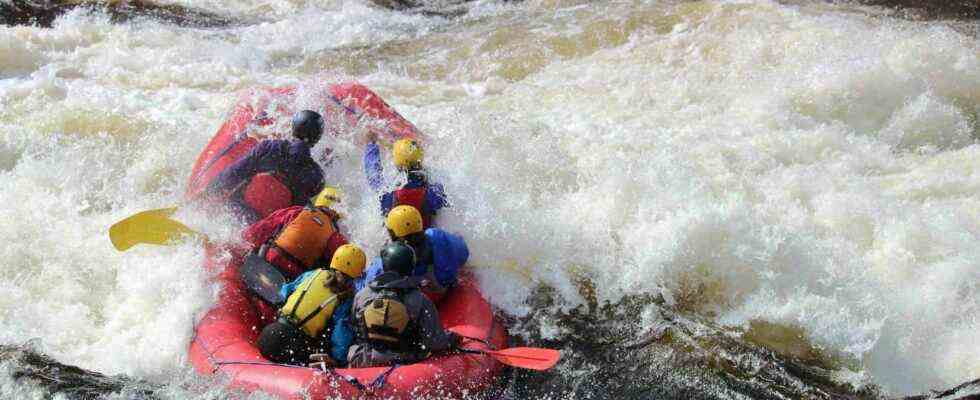The day after the signing of a global framework for the protection of biodiversity, the Trudeau government says it is ready to start a “dialogue” with the Government of Quebec about the protection of the Magpie River, learned The duty. Hydro-Quebec, however, refuses to give up the hydroelectric potential of the river, while supporters of the creation of a protected area now hope to obtain international recognition.
The international agreement signed Monday at the UN conference on biodiversity (COP15) provides in particular that the States undertake to protect 30% of natural terrestrial and aquatic environments by 2030. Canada has also promised to do everything possible to achieve this target.
In this context, does Environment Minister Steven Guilbeault believe that the Magpie River should be protected? “The protection of natural environments is a priority, but the response to this specific request requires a dialogue between the various ministries concerned, which will take place in 2023”, argued the minister’s office on Wednesday.
According to the federal government, the realization of the project of protected area of 2600 km2 along this Côte-Nord river could contribute to fulfilling the commitments made by Ottawa with regard to the protection of ecosystems. “We are committed to conserving 30% of natural environments by 2030 and we are working with the provinces, in this case Quebec, indigenous peoples and other stakeholders,” said a written response.
This eventuality is also well seen by the Muteshekau-shipu alliance, which campaigns for the preservation of this imposing river. “We would welcome that very favorably. We’ve been working for the protection of the Magpie for several years. We had several discussions with Hydro-Quebec and the Government of Quebec, but we received a dismissal. We would have a great opportunity to conclude this file in the coming months with federal intervention, ”explained the director of conservation of the Society for Nature and Parks of Quebec, Pier-Olivier Boudreault.
International approach
The group of Innu, elected officials from the North Shore and environmental groups also announced on Wednesday that it is taking steps to register the river as an area of Aboriginal and community heritage, a protection status recognized by United Nations World Conservation Monitoring Centre.
“We have waited long enough after the government and Hydro-Québec. It is time for us to take another step to materialize the will of the region by having the protection of the river recognized internationally,” summed up the prefect of the MRC de Minganie, Luc Noël.
“We don’t want another project like the Romaine River project. We don’t want a dam project that only lasts a few years. We are a region of resources. But we now want sustainable investments, and the Magpie would allow us to do so, ”he added, pleading for the development of recreational tourism in the region.
In addition to its importance for Innu culture and for biodiversity, the Magpie is part of National Geographic’s ranking of the ten best rivers in the world for the practice of whitewater activities.
The Muteshekau-shipu alliance has already granted “legal status” to the river. This status means that the speakers affirm that the Magpie is a “living entity” which has its own rights, “in the same way as a human being or a corporation”. This project earned them the recent Prix Droits et Libertés 2022 from the Commission des droits de la personne et des droits de la jeunesse.
Refusal of Hydro-Quebec
For the moment, however, the steps have come up against a refusal on the part of Hydro-Québec to give up the hydroelectric potential of the river. The state corporation believes that “in the current context, where we foresee a sustained increase in electricity demand and at the precise time when we are updating our studies on Quebec’s hydrological potential, it would be premature to give up the potential of ‘a river, whatever it may be’.
The Magpie River was included in the potential hydroelectric “project portfolio” of the 2009-2013 strategic plan. But the 2022-2026 plan does not mention any rivers where a dam could be erected, while emphasizing that Quebec’s energy transition will cause energy demand to jump in the coming decades.
“Hydro-Québec has a great opportunity to show that it listens to First Nations, environmental groups and civil society. After all, this is one of the major orientations of its latest strategic plan, ”wrote actor and co-founder of the Rivières Foundation, Roy Dupuis, last week in a letter published in The duty.
The Legault government is not closing the door to a project to protect the river, after having put it aside in 2020. “During COP15, the Quebec government announced its intention to protect 30% of the territory for 2030. From 2023, consultations will be conducted for the development of the Nature Plan. It is obvious that the work of designating protected areas must be accelerated, which is why several territories are currently under study throughout Quebec, ”explained Wednesday the office of the Minister of the Environment, Benoit Charette.
